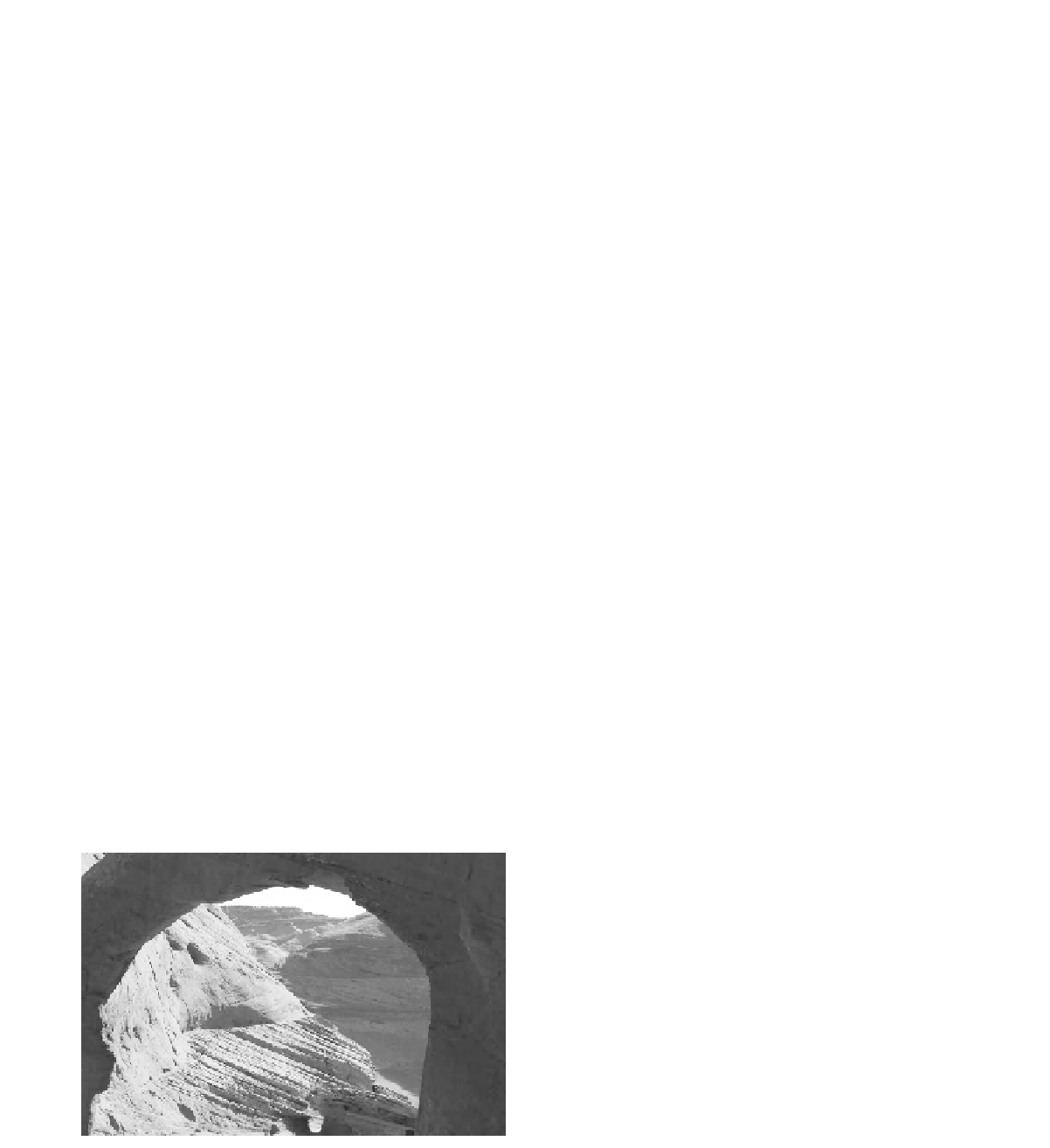Geoscience Reference
In-Depth Information
more dynamic over shorter timescales as well (see also
Faulkner, Alexander and Zukowskyj, 2008, and Della
Seta
et al
., 2009, for further examples in this context).
Similarly, the Super Sauze earthflow example suggests
cyclicity in the development of chaotic, disconnected sur-
faces, upon which connected drainage patterns redevelop
(Maquaire
et al
., 2003). Discontinuity of flows in drylands
has long been recognised as a way of producing discon-
nected systems and cycles of erosion and deposition (e.g.
Schumm, 1973). Such cycles have been demonstrated on
timescales from annual to decadal on badland pediments
and over several centuries in the main channel system in
the Mancos Shale badlands by Godfrey, Everitt and Martın
Duque (2008). The macro-scale explanation uses varia-
tions in climate and tectonics to evaluate how these inter-
nal processes might be affected over different timescales.
This approach thus ties into the discussion above about
tectonic and climatic impacts on badlands, but also other
elements of landscape interconnectivity such as river cap-
ture (e.g. Mather, Stokes and Griffiths, 2002; Griffiths
et al.
, 2005).
Rock slopes are found in the shield-platform deserts of the
world (see Mabbutt's 1977 classification), across Africa,
Arabia, Australia and India. Their form is characterised by
retreating cuestas, mesas and buttes, with rate of formation
being controlled by the geological form of the dominant
bedrock in interaction with the rate of surface weather-
ing and mass movement processes. Herein, rock slopes
are categorised as (1) gravity-controlled, where slopes are
steep and slope failure is typified by rockfalls leading to
predominantly bare profiles or (2) rock (debris)-mantled
slopes that are lower in gradient and are typically con-
trolled by both mass movement and erosional processes.
In many dryland locations, these different slope units oc-
cur as a continuum of slope evolution with steep, bare
rock slopes occupying the upper section of a hillslope,
near the divide or free face of a cuesta and rock or debris-
mantled slopes occupying a mid-slope location, where de-
bris has accumulated. Lower slope sections are often over-
lain by soils, which are not dealt with here (see Chapters 6
and 11).
Rock slopes are characterised by a range of landforms
including (1) bare rock or slick-rock slopes, (2) insel-
bergs/bornhardts and (3) substrate ramps, all of which tend
to form beneath the harder caprocks or cuestas mentioned
above. Numerous authors argue that rates of formation
of these landforms may vary between similar strata, due
to the control exerted by the overlying caprocks, which
either protect the rock slopes from weathering or enhance
the processes of weathering that lead to distinctive land-
form development.
10.3
Rock slopes
Rock slopes occur where the geological substrate is ex-
posed via processes such as water and wind erosion (of
soils) and mass movement (of parent material). The rel-
ative speed of erosion relative to weathering processes
in drylands (Chapter 6) results in these conditions occur-
ring frequently. In arid zones, such geology is often sed-
imentary in nature, overlying (or underlying) older and
deeper crystalline bedrock, as in the slick-rock, sandstone
slopes of the southwestern United States (Figure 10.11).
10.3.1
Bare rock or slick-rock slopes
Massively bedded or unfaulted bedrock is common in
arid zones and can form into very durable slopes that
weather at slow rates and are characterised by their clean
faces of varying steepness. The strength of such slopes has
been estimated using the Rock Mass Strength classifica-
tion (Selby, 1982), which illustrates that rocks with lower
mass strengths weather to lower gradients compared to
those with high mass strengths. Clearly, in sedimentary
exposures, variability of mass strength may be evident.
Such variability is thought to control the rate of weath-
ering and can lead to distinct changes in the gradients of
bare rock slopes across sedimentary boundaries or bed-
ding planes in the underlying bedrock.
10.3.1.1
Inselbergs/bornhardts

